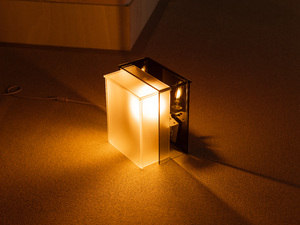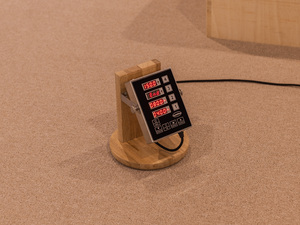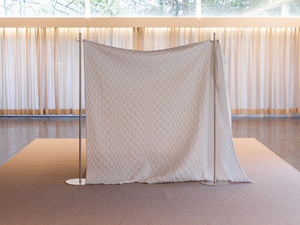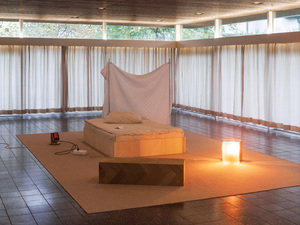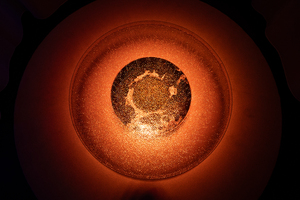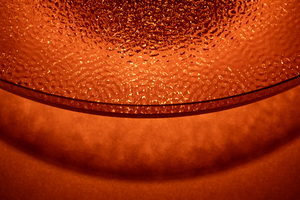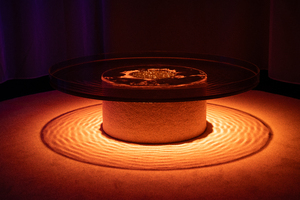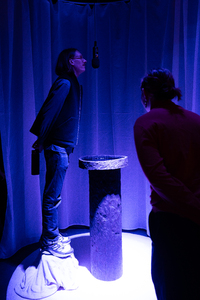"Installation"
| Term | Installation |
| Metakey | Category (institution:project_category) |
| Type | Keyword |
| Vocabulary | HfG |
434 Items
- Page 1 of 37
Street Light Lamp
- Title
- Street Light Lamp
- Author
- Category
- Date
- Oktober 2023
- Title
- Street Light Lamp
- Copyright Notice
- © Julius Bläser
- Legal protection / Licence
- Permission usage HfG
- Media creator
- Relationship/function
- Projektleiter/in
- Semester
- Program of Study
- Type of graduation project
- Imported on
- 05.11.2024
- Parent sets
- 1
Parquet Chest
- Title
- Parquet Chest
- Author
- Category
- Date
- Oktober 2023
- Title
- Parquet Chest
- Copyright Notice
- © Julius Bläser
- Legal protection / Licence
- Permission usage HfG
- Media creator
- Relationship/function
- Projektleiter/in
- Semester
- Program of Study
- Type of graduation project
- Imported on
- 05.11.2024
- Parent sets
- 1
Sleep Timer
- Title
- Sleep Timer
- Author
- Category
- Date
- Oktober 2023
- Title
- Sleep Timer
- Copyright Notice
- © Julius Bläser
- Legal protection / Licence
- Permission usage HfG
- Media creator
- Relationship/function
- Projektleiter/in
- Semester
- Program of Study
- Type of graduation project
- Imported on
- 05.11.2024
- Parent sets
- 1
Mattress Multiplug
- Title
- Mattress Multiplug
- Author
- Category
- Date
- Oktober 2023
- Title
- Mattress Multiplug
- Copyright Notice
- © Julius Bläser
- Legal protection / Licence
- Permission usage HfG
- Media creator
- Relationship/function
- Projektleiter/in
- Semester
- Program of Study
- Type of graduation project
- Imported on
- 05.11.2024
- Parent sets
- 1
Bedspread Curtain
- Title
- Bedspread Curtain
- Author
- Category
- Date
- Oktober 2023
- Title
- Bedspread Curtain
- Copyright Notice
- © Julius Bläser
- Legal protection / Licence
- Permission usage HfG
- Media creator
- Relationship/function
- Projektleiter/in
- Semester
- Program of Study
- Type of graduation project
- Imported on
- 05.11.2024
- Parent sets
- 1
Bedside Readings
- Title
- Bedside Readings
- Author
- Category
- Date
- Oktober 2023
- Title
- Bedside Readings
- Copyright Notice
- © Julius Bläser
- Legal protection / Licence
- Permission usage HfG
- Media creator
- Relationship/function
- Projektleiter/in
- Semester
- Program of Study
- Type of graduation project
- Imported on
- 05.11.2024
- Parent sets
- 1
Anything Besides a Bed
- Title
- Anything Besides a Bed
- Author
- Category
- Date
- Oktober 2023
- Title
- Anything Besides a Bed
- Copyright Notice
- © Julius Bläser
- Legal protection / Licence
- Permission usage HfG
- Media creator
- Relationship/function
- Projektleiter/in
- Semester
- Program of Study
- Type of graduation project
- Imported on
- 05.11.2024
- Parent sets
- 1
Video Objekt 3
- Title
- Video Objekt 3
- Author
- Category
- Type of project / creative work
- Keywords
- Date
- 24.10.2024
- Title
- Video Objekt 3
- Title (en)
- Video Object 3
- Copyright Notice
- © Joshua Weber
- Legal protection / Licence
- Permission usage HfG
- Media creator
- Relationship/function
- Description of media
- Videoaufnahme von Objekt 3 in Aktion
- Description of media (en)
- Video recording of object 3 in action
- Projektleiter/in
- Semester
- Program of Study
- Type of graduation project
- Imported on
- 03.11.2024
- Parent sets
- 1
Bilder Ausstellung
- Title
- Bilder Ausstellung
- Author
- Category
- Keywords
- Date
- 24.10.2024
- Title
- Bilder Ausstellung
- Title (en)
- Images exhibition
- Copyright Notice
- © Joshua Weber
- Legal protection / Licence
- Permission usage HfG
- Media creator
- Relationship/function
- Description of media
- Die Objekte der Ausstellung und ihr Erlebnis
- Description of media (en)
- The objects of the exhibition and the experience
- Projektleiter/in
- Semester
- Program of Study
- Type of graduation project
- Imported on
- 03.11.2024
- Parent sets
- 1
Bilder Ausstellung
- Title
- Bilder Ausstellung
- Author
- Category
- Keywords
- Date
- 24.10.2024
- Title
- Bilder Ausstellung
- Title (en)
- Images exhibition
- Copyright Notice
- © Joshua Weber
- Legal protection / Licence
- Permission usage HfG
- Media creator
- Relationship/function
- Description of media
- Die Objekte der Ausstellung und ihr Erlebnis
- Description of media (en)
- The objects of the exhibition and the experience
- Projektleiter/in
- Semester
- Program of Study
- Type of graduation project
- Imported on
- 03.11.2024
- Parent sets
- 1
Bilder Ausstellung
- Title
- Bilder Ausstellung
- Author
- Category
- Keywords
- Date
- 24.10.2024
- Title
- Bilder Ausstellung
- Title (en)
- Images exhibition
- Copyright Notice
- © Joshua Weber
- Legal protection / Licence
- Permission usage HfG
- Media creator
- Relationship/function
- Description of media
- Die Objekte der Ausstellung und ihr Erlebnis
- Description of media (en)
- The objects of the exhibition and the experience
- Projektleiter/in
- Semester
- Program of Study
- Type of graduation project
- Imported on
- 03.11.2024
- Parent sets
- 1
Bilder Ausstellung
- Title
- Bilder Ausstellung
- Author
- Category
- Keywords
- Date
- 24.10.2024
- Title
- Bilder Ausstellung
- Title (en)
- Images exhibition
- Copyright Notice
- © Joshua Weber
- Legal protection / Licence
- Permission usage HfG
- Media creator
- Relationship/function
- Description of media
- Die Objekte der Ausstellung und ihr Erlebnis
- Description of media (en)
- The objects of the exhibition and the experience
- Projektleiter/in
- Semester
- Program of Study
- Type of graduation project
- Imported on
- 03.11.2024
- Parent sets
- 1
